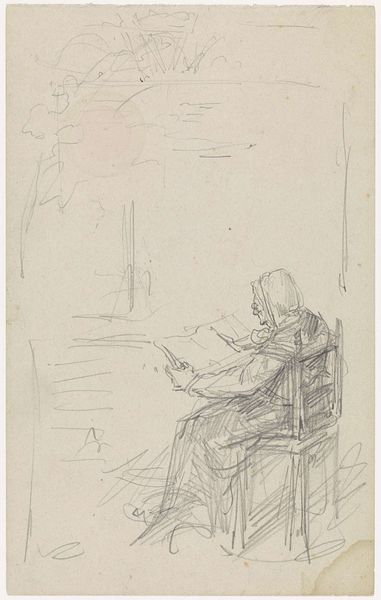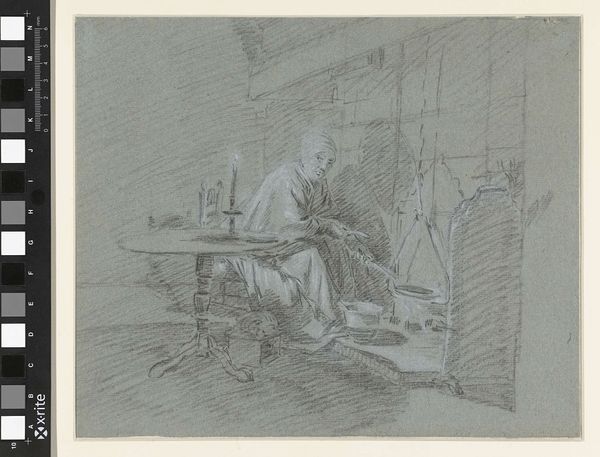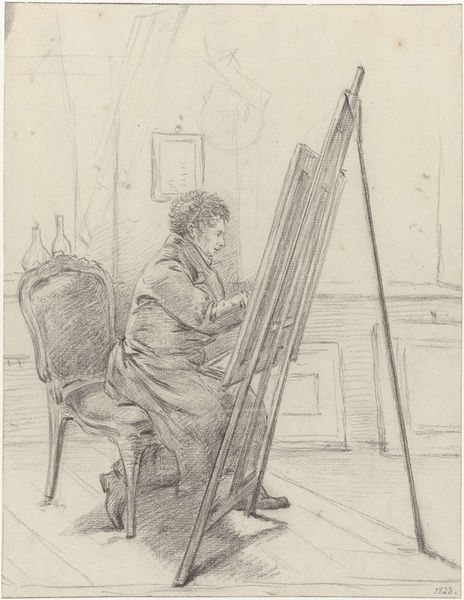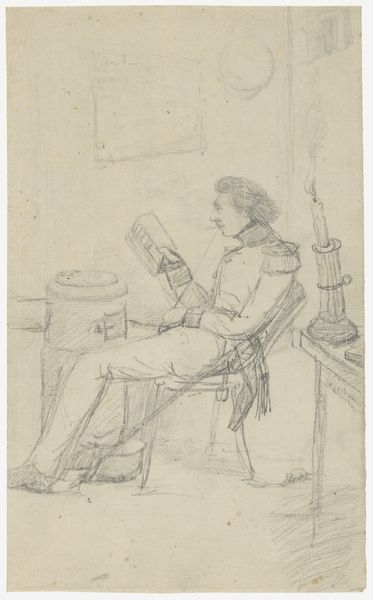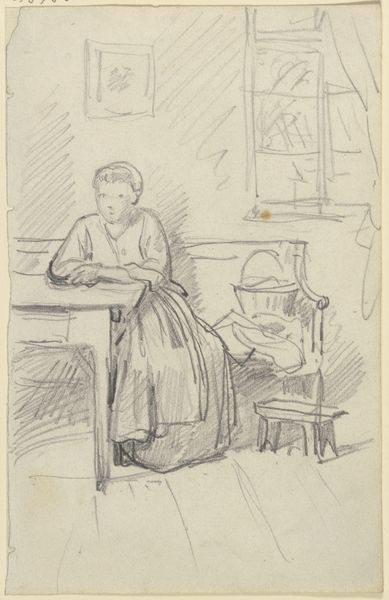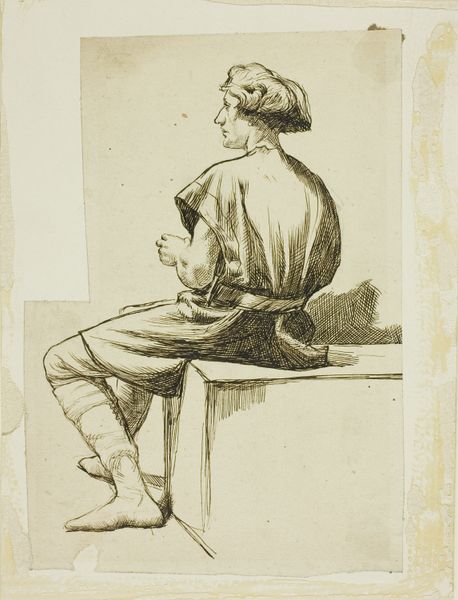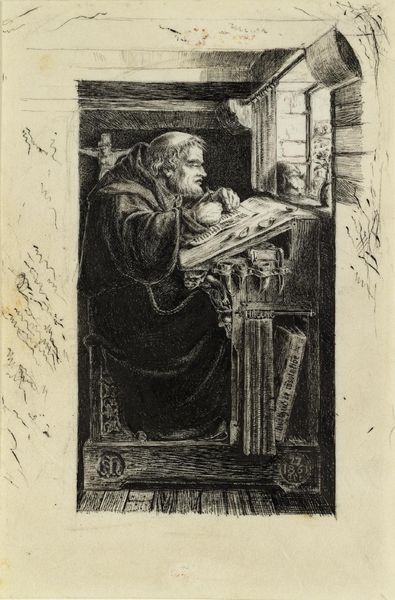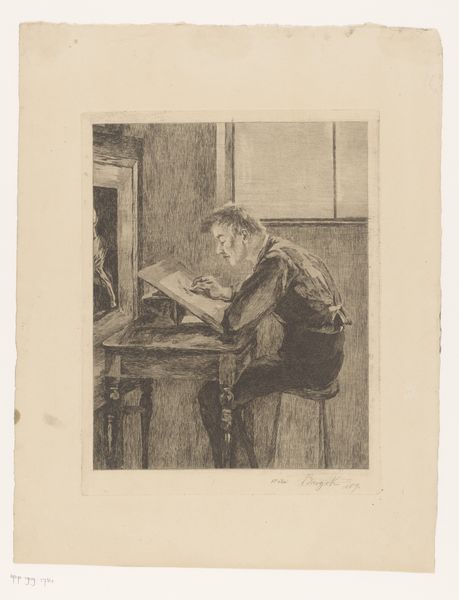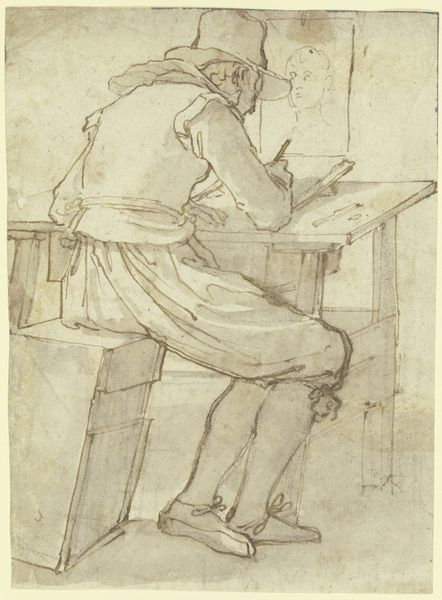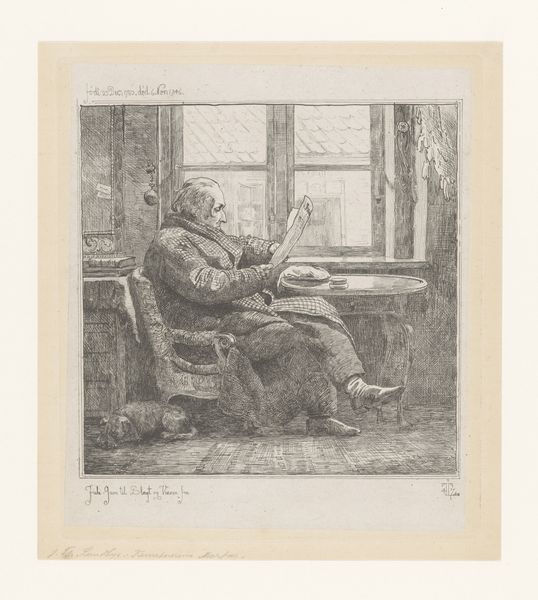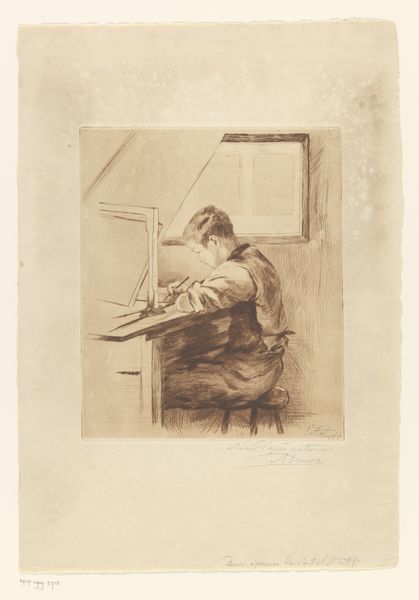
drawing, paper, pencil
#
portrait
#
drawing
#
pencil sketch
#
paper
#
pencil
#
genre-painting
#
rococo
Dimensions: height 364 mm, width 170 mm
Copyright: Rijks Museum: Open Domain
Editor: This is "Pennensnijder," a pencil drawing on paper from around 1765-1770, by Willem Joseph Laquy. It depicts a man carefully sharpening a quill. It feels very intimate, almost voyeuristic. What can you tell me about the social context surrounding this quiet scene? Curator: This seemingly simple genre scene actually speaks volumes about the burgeoning middle class in the 18th century and the rising importance of literacy and administration. Who had access to these skills, and how were they acquired? Consider that the Rococo style, known for its opulence, often obscured the labor and class structures that sustained it. This quiet scene of industry presents an interesting contrast, don't you think? How does Laquy portray the subject in a manner that suggests both his profession and perhaps his social standing? Editor: I hadn’t considered that! The detail in the desk and the window suggests a comfortable, though not extravagant, lifestyle. Was Laquy perhaps commenting on the value of labor through this contrast, or simply documenting a trade? Curator: That’s the critical question! While documenting everyday life, Laquy subtly draws our attention to the agency involved in the act of writing and record-keeping. Who controlled the narrative? Was the ‘pennensnijder’ merely a craftsman, or an active participant in shaping knowledge and power through his skilled labor? This piece invites us to reflect on labor, social class, and the democratization of knowledge. Consider how gender also plays a role; who were excluded from the world of literacy and administrative power during this era? Editor: It’s incredible how a simple drawing can hold such complex questions about society, class, and access to knowledge. I’ll never look at genre scenes the same way again! Curator: Exactly. It reminds us to continuously question the narratives embedded within art, acknowledging how art both reflects and shapes the societal frameworks of its time.
Comments
No comments
Be the first to comment and join the conversation on the ultimate creative platform.

